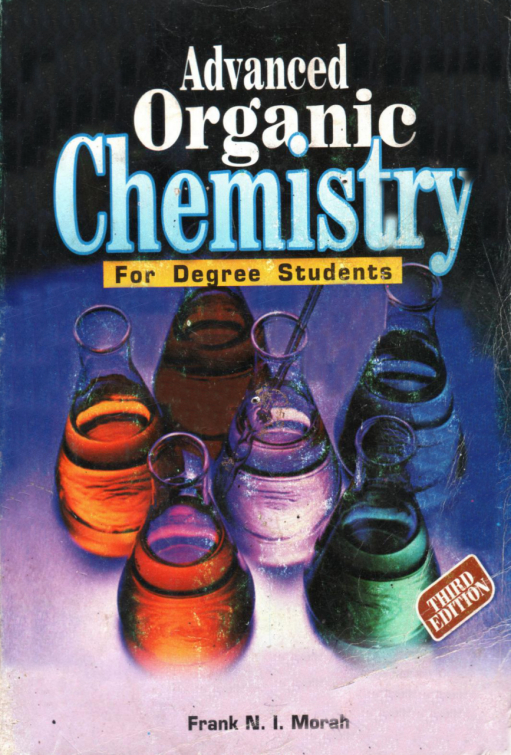Advanced Organic Chemistry for Degree Students (3rd Edition)
$80.00
CONTENTS
CHAPTER 1: Purification Composition and Structure of organic compounds 1
CHAPTER 2: Hydrocarbons
CHAPTER 3: Stereochemistry
CHAPTER 4: Haloalkanes
CHAPTER 5: Hydroxy and related compounds
CHAPTER 6: Amines
CHAPTER 7: Carbonyl compounds-aldehydes and ketones
CHAPTER 8: Carboxylic acids and acid derivatives
CHAPTER 9: Polyfunctional Compounds
Description
PREFACE
This textbook is designed for undergraduate degree, diploma and certificate students in chemistry and related science disciplines who are offering course in organic chemistry. It will also serve as a use reference book for postgraduate and other advanced students.
Organic chemistry is a very interesting science discipline which has a wide application in everyday life. Despite the revolutionary advances in applied organic chemistry, students often have the erroneous impression that organic chemistry is a formidable subject. This is mainly because they take the wrong approach to the study of organic chemistry. There is often the tendency for students to cram an overwhelming number of chemical concepts instead of learning the basic organic chemistry principles. This leads to confusion of a lot of “similar” but different concepts. The basic organic chemistry principles constitute the cornerstone on which the entire discipline is built. Once the basic frame work is set up, each new topic, takes off with only a little step from the preceding one. I have therefore taken pains in this took to lay down and explain the basic principles behind each concept. I believe that this approach will make it easier for the student to digest. assimilated and appreciate the different organic chemistry concepts.
Millions of organic compounds are known and the chemistry of these compounds is essentially the chemistry of their functional groups. The book therefore deals mainly with functional group chemistry. The general methods of preparation, properties and applications of different classes of organic compounds are discussed from chapter two upwards. The general principles be-hind the use of infrared, ultra-violet/visible and nuclear magnetic resonance spectroscopy and mass spectrometry in determination and elucidation of the structure of or compounds is discussed in chapter one. The spectral properties oft the different classes of organic compounds are discussed under the relevant chapters. This book will therefore also serve as a useful text for applied spectroscopy courses. The mechanistic approach adopted in the discussion of reactions of the different compounds will in addition make this book useful for the study of organic synthetic reactions
There is the problem of nomenclature of chemical com-pounds in the teaching of chemistry at the tertiary level. The senior secondary school (high school) students are brought up with the International Union of Pure and Applied Chemists (IUPAC nomenclature. On arrival at the tertiary institution, they come across different lecturers, within the same academic department, freely using different naming systems. One can still see “Old” senior chemistry lecturers using the old or obsolete names. Perhaps this is part of the much talked about academic freedom. I have in this textbook used the I. U. P. A. C. Nomenclature as adapted by the West African Examination Council (WA. E. C.) for the West African sub-region. The trivial or common names are put in parentheses. The discussion on each class of organic com-pounds is started with structure and nomenclature before going into the main subject of the chapter. Many organic chemistry terms are also used in the book. Each of these terms is defined when-ever it is being introduced for the first time in the book.
Finally each chapter is accompanied by a set of study questions. These are to test the student’s understanding of the subject matter. It is necessary that the student attempts these questions after studying each of the topics. It is hoped that the pattern of presentation will make the students to enjoy organic chemistry.
Frank N. I. Morah
Prof. Frank Morah
Professor Frank Morah was educated at the University of Ibadan, Nigeria, where he received his B.Sc. Degree in 1976 and M.Sc. in 1978 in Chemistry. He joined the service of the University of lbadan in June 1978 as an Academic Staff. He was consequently awarded a Ph.D. degree in Organic Chemist (Natural Products) before leaving University of Ibadan for College of Education, Nsugbe, Anambra State as pioneer staff in April 1982. At the College of Education he was the Head of the Department of Chemistry and the Dean of the School of Natural and Applied Sciences.
In 1986 he joined the service of the then Bendel State Univeristy, Ekpoma, from where he transferred to the University of Calabar, at the beginning of 1988/89 academic year as a Senior Lecturer. He was a visiting lecturer at the Michael Okpara University of Agriculture, Umudike and Cross River University of Technology CRUTECH, Calabar.
Professor Frank Morah was Head of the Department of Pure and Applied Chemistry, Unical and the Head of the Department of Chemical Sciences, CRUTECH.. He is a member of the Institute of Public Analysts of Nigeria, MIPAN, a fellow of the Chemical Society of Nigeria, FCSN, and a fellow of the Institute of Chartered Chemists of Nigeria, FICCON amongst others. Prof. Morah was the chairman of the Cross River State Chapter of the Chemical Society of Nigerian. He is an author and co-author of many research publications reviews and books,
Questions and Answers
You are not logged in
